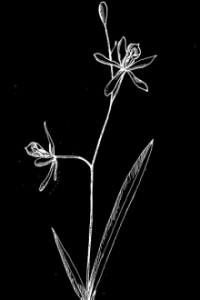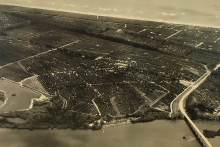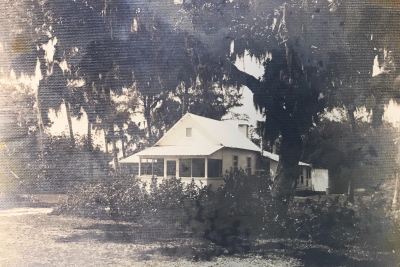Captain Frank Forster Sees Orchid Island's Potential
In the late 1800s Captain Frank Forster, who had had a sailing career that took him all over the world, was the first with a desire to make a home in the area where Town of Orchid is now located. He was only 29 years of age, but he had a vision for the area which at that point was still only accessible by boat - perfect for a sea captain ready to put down roots. He acquired land under the Homestead Act. The home he built was on the riverside of Orchid north of where the Wabasso bridge is now and had a long dock that extended into the lagoon from which he frequently fished. At that time it was said that the river was so thick with fish that boats had difficulty making headway!

He planted a citrus grove on his property, but also successfully grew other crops. The fruit his grove yielded was delicious and enjoyed by many travelers aboard Henry Flagler's Florida East Coast Railway where it was available in the dining cars.
It was Captain Forster who first dubbed the area “Orchid Island” for the indigenous Epidendrum Tampense wild orchid variety (also known as the Encyclia Tampensis orchid) which grew in profusion on oak trees and flowered beautifully every May and June. The scent of these small flowers is very appealing. The barrier island in Indian River County is to this day officially titled Orchid Island.
Early on he had the intent of sharing the beauty of Orchid Island with others by selling portions of his property to new settlers with whom he could start a community, such as the Michael family.

Today the visionary Captain Forster is celebrated through the 110 acre Captain Forster Hammock Preserve. This beautiful preserve is open to the public and features trails through both maritime, wetland and coastal habitats. The preserve is a great way to experience old Florida as it was in those early days of settlement. It remains a great place to spot the tiny orchid variety that Captain Forster came upon when he first arrived and after which he named the area.

